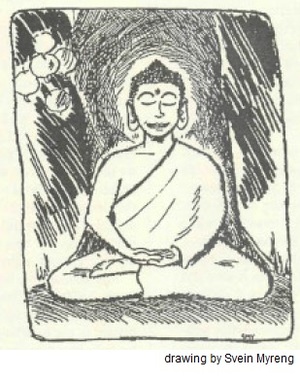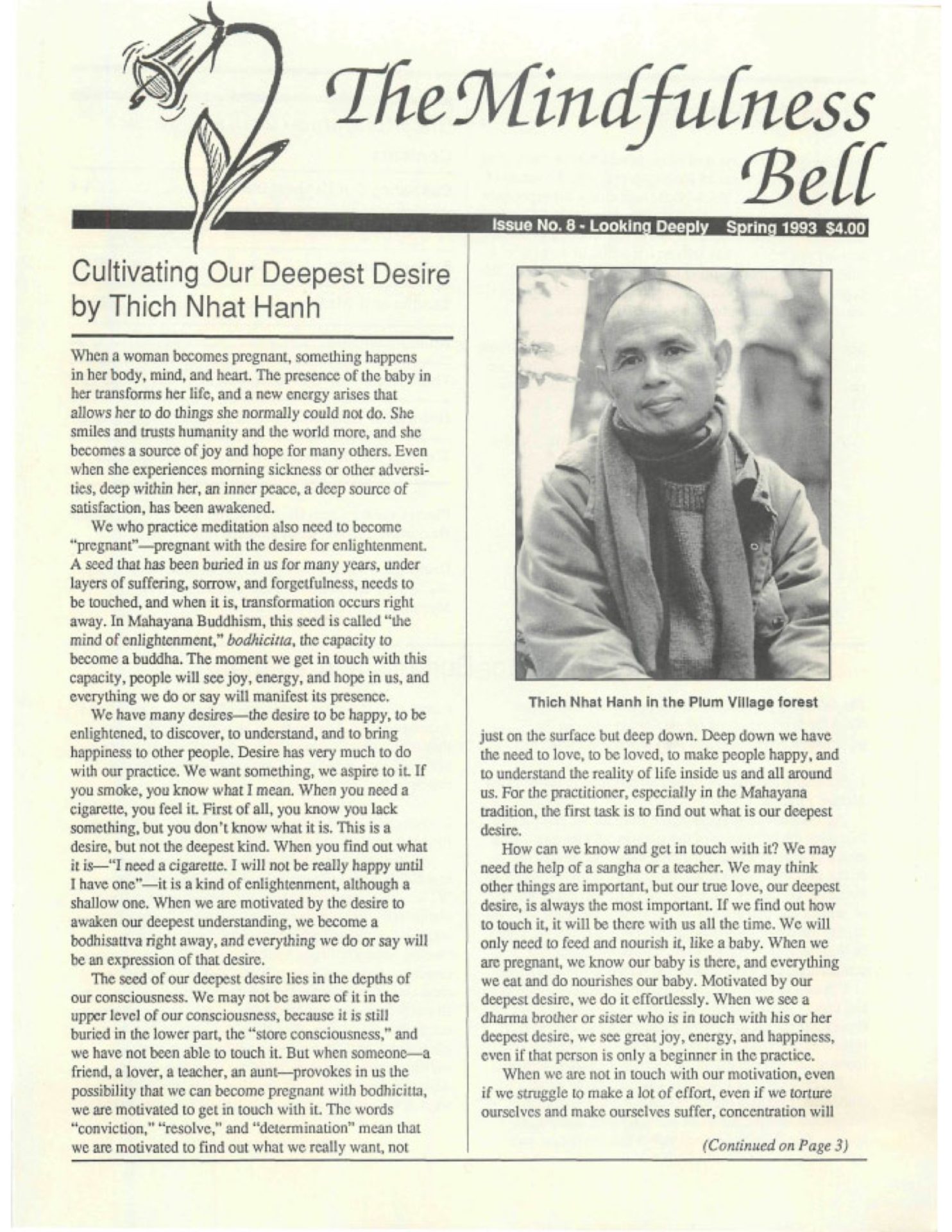By Nora Houtman
When form fades away, space will remain.When sound comes to birth, even then silence stays.Behind the clouds the light of the sun.Why then is Enyadatta’s Head-Hunting done?!
The first line is about form and space. Usually we see a form in space. For example, in a room we see furniture, flowers and a carpet. When we remove these objects, what is left? Our brain answers, “space.” But when we really look,
By Nora Houtman
When form fades away, space will remain.When sound comes to birth, even then silence stays.Behind the clouds the light of the sun.Why then is Enyadatta's Head-Hunting done?!
The first line is about form and space. Usually we see a form in space. For example, in a room we see furniture, flowers and a carpet. When we remove these objects, what is left? Our brain answers, "space." But when we really look, we see space only because there are objects in it. We see distance and that gives meaning to the word "space." Space has content. This desk is nearer to me than the flowers. Forms and objects are in it. We could ask ourselves, "Is there also space in these objects?"
The second line tells of sound. We are used to saying that sound disturbs silence. Where there is sound, there is no silence and where there is silence there cannot by any sound. Walk high up in the mountains, where there is no water trickling down between the rocks, and the marmots are not whistling and hissing, and there you really cannot hear a single sound. We call this silence. But even when there is silence around us, the never-ending discourse in our brain continues. When I really listen to a sound with great attention, the moment arises when I no longer hear the chattering of the brain. That is real silence. Without sound from the outer world, silence may be easier to enter, but silence can also arise when we are in the midst of noise.
The third line also speaks about this silence, which is the same as looking deeply into things. It is accompanied by a feeling of clarity. We know that this clarity can be clouded over, but the clouds are only temporary. Clouds appear when our attention diminishes. At these times we may think that light never existed. But at some point the clouds will be lifted. From this we learn what to do when clarity disappears. We become more observant and this will lead to a faster awareness of our lack of mindfulness. When we are feeling irritated, aggressive, or fearful, we are not capable of being clearly present. But when we remember that the clouds are only temporary, although the situation may still be difficult, we can relax, smile, and observe our breathing. We know that the light is only temporarily out of sight, and all that needs to be done is to open the curtain with mindfulness.

Now the fourth line. Enyadatta was a beautiful young woman. Each morning after bathing and dressing, she liked to look into her mirror and was always pleased with the beauty she saw reflected back to her. But one day, when Enyadatta looked in her mirror, she saw nothing. "How can this be?" she thought, "Where did my face go?" She looked around the floor, but her face was not there. She checked under the bed, around the room, and even under the mattress, but she had no success in finding her face. Feeling disturbed, she left the room and asked her sister for help.
To relieve Enyadatta's distress, her sister began looking around with her for her face. Soon her mother came and joined them, and then her younger brother. Everyone could see that Enyadatta still had her face, but no one dared mention it, for every time they did, Enyadatta cried, "Don't talk such nonsense! Just help me find my face."
Servants, friends, neighbors, other housemates, and finally the whole village joined in the search for Enyadatta's face.
Enyadatta's brother thought, "I must find a way to stop this, or Enyadatta will end up in an asylum." He tried to touch her, but she panicked. Then he sneaked up behind her, and when she next cried, "Where is my face?" he took two quick steps and slapped her cheeks.
"Ow!" cried Enyadatta, her hand automatically reaching to the painful spot on her cheeks. Her hands met her head, and she was delighted to discover that she had her face again.
The Buddha told this story to illustrate that we should maintain trust even when the dawn of deeper insight does not show itself. When I lack clear attention, I can look more deeply into the clouds of aggression, anger, desire, irritation, or whatever the quality of the cloud is. I don't even have to give it a name. The situation is still there, but it is no longer hidden behind the cloud of anger or other emotions.
Looking mindfully at the clouds makes them more transparent. I do not need to chase after the light as Enyadatta did, because the light is already here. I only need to allow the clouds to become more and more transparent through continuous mindfulness.
Nora Houtman, True Fruition, has been teaching meditation practice for many years in Bilthoven, Holland. This piece is adapted from her Dharmacarya Ceremony verse and talk in Holland in October.

